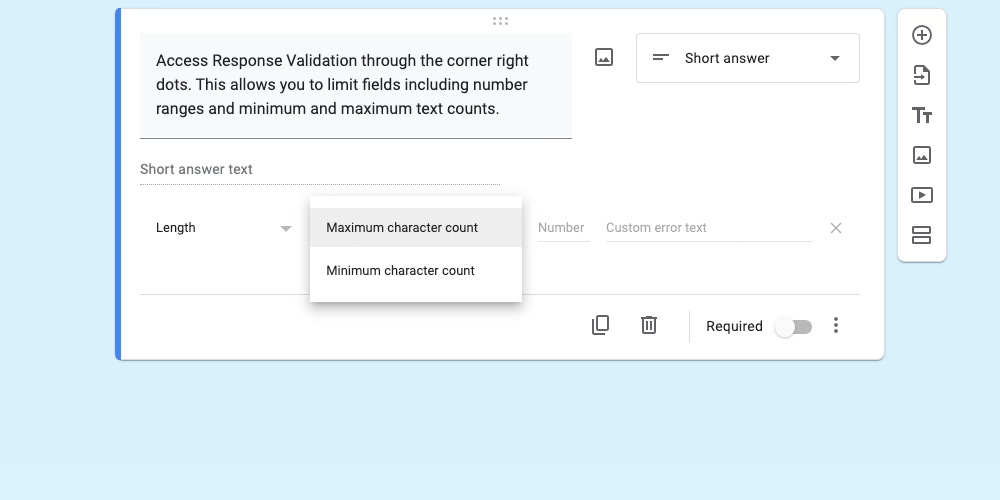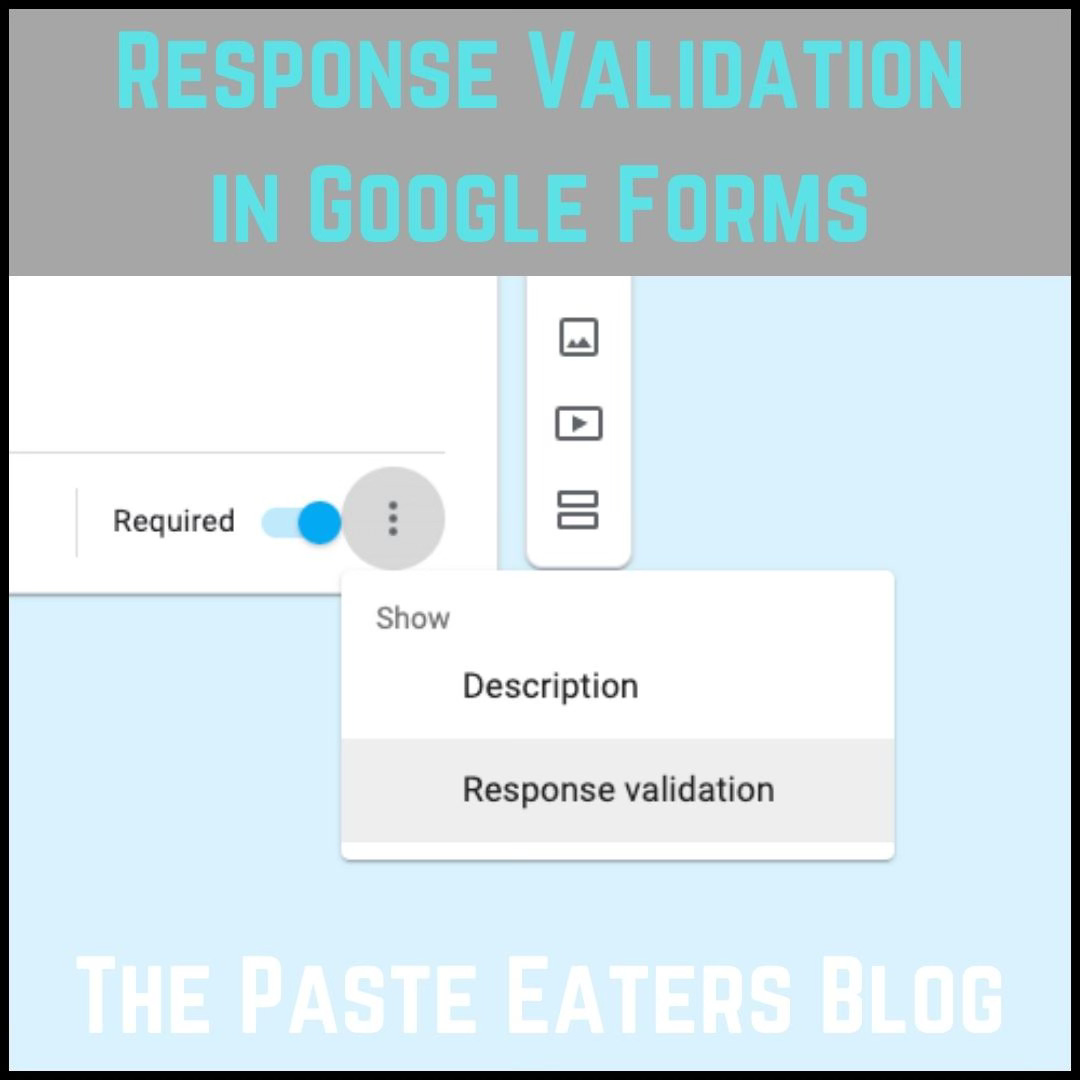🖥️ Round Pegs, Square Holes, and Google Forms
Ever want to categorically exclude responses on Google Forms? How do you address round pegs in square holes?
Have you checked out my new series Teach Writing Tomorrow? This series builds first steps and next steps from my talk “Help! I don’t know how to teach writing.”
Ever create a Google Form expecting one response type and students type another? (Ignoring directions would never happen in the classroom, right?) Ever feel frustrations as categorically wrong responses throw off your results as a data set? Wish you nudge students towards responses that at least match the fields you want?
How do you deal with the proverbial round pegs in square holes?
As a follow up to my post, “Five Ways Google Forms Help Teach Writing”, I'll introduce response validation as a way to exclude categorically wrong responses.
The Big Picture. Response validation (RV) allows rule setting for responses, restricting answers to predetermined categories like numbers or character-limited text. As always, Google's software is a living, breathing thing, so expect the software to evolve as of this writing (Nov. 2024). How can you restrict responses? Here are the fields:
Number: Greater than, Greater than or equal to, Less than or equal to, Equal to, Not equal to, Between, Not between, Is number, Whole number
Regular expression: Contains, Doesn't contain, Matches, Doesn't match
Text: Contains, Doesn't contain, Email, URL
Length: Maximum character count, Minimum character count
What does it look like? Check out the three screenshots below!
How It Works. Click the three dots in the lower right for response validation. This will bring up your options. (Note: You can only set up one RV per response.) Simply set the rule and program an error message with Custom error text. [Error message = feedback!]
Caution: Once your Google Form becomes active, listen to students in case you type a rule incorrectly. This might have the reverse effect and exclude more than you want!
Yes, but. "Why the extra work restricting responses when you should be happy they did anything? Isn't a response that doesn't match better than no response at all? If they think their answers will be rejected, won't they just stop doing work?"
Restricting categorically wrong responses allows programming instant feedback. If you want a number, exclude text. If you want short responses, exclude long responses.
In many cases, if the skill or response comes with requirements, response validation helps. But even then, students need primed that their Google Forms will push back. More on that soon.
Note: Use common sense when programming. This feature should not be used for every field for every sheet. If you’re 99% sure students won’t type numbers into a text field, avoid it. But if you just want numbers from a limited set, use it.
Troubleshooting. While our directions set the rules for responses, meaning content and length, I’ve learned the hard way recently that students themselves need primed. Especially when completing assignments from afar!
Case in point. I recently used RV during a virtual learning day. Students had to type a paragraph. I limited responses to 250 characters minimum to exclude those who typed a single sentence. My error message told them to type more. What were the results?
Some students copy-pasted and emailed the error message back to me, asking for help. "It said my answer was short and I needed to add more. What do I do?" I restated my error message feedback. Then all was well.
Others said the error message meant they were unable to complete their work, therefore they didn't have to do it. My response was more stern.
Imagine a GPS giving directions and drivers panicking: "It said to turn left. What do I do?" As I've written elsewhere, general literacy impacts computer use.
In the Classroom. Over the past year I’ve experimented sporadically using RV when applicable. In some cases, this streamlines responses, but only when students were primed. Here are two quick applications I like so far:
Digital Bookmarks. For a recent novel, students recorded where they stopped during the last five minutes of class. Since the chapters and page numbers have a fixed range, I programmed the sheet to only allow responses within that range. This prevented students from typing sentences in a number field, making the responses easier to read.
Thesis Statements. When teaching thesis statements, some students type paragraphs instead. RV allows character maximums, forcing the overly wordy and verbose students to type a sentence rather than a full paragraph.
Next Steps. As of this writing, I realize I could expand my last two examples into full blown posts if there’s enough interest. I’m working on a longer-form post about student writing notebooks and may need some shorter ideas while I draft.
✍️ What questions do you have about response validation? Please leave comments below and I’d love to help out!
📚 While you’re here, check out some other posts:
📱 Also, check out some other posts from my side blog, HappyCasserole.









Great follow-up to your previous post about Google forms. Very helpful tips.